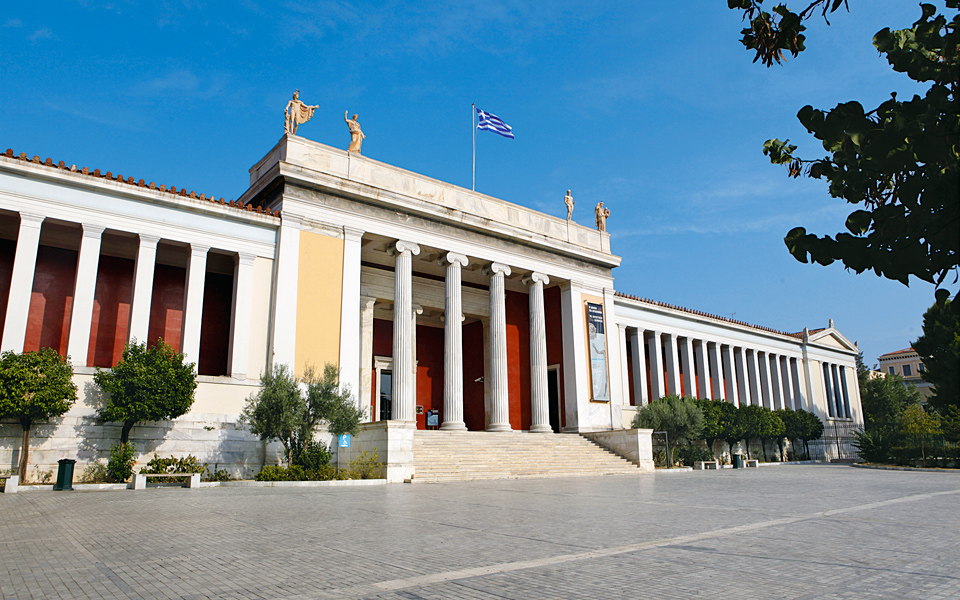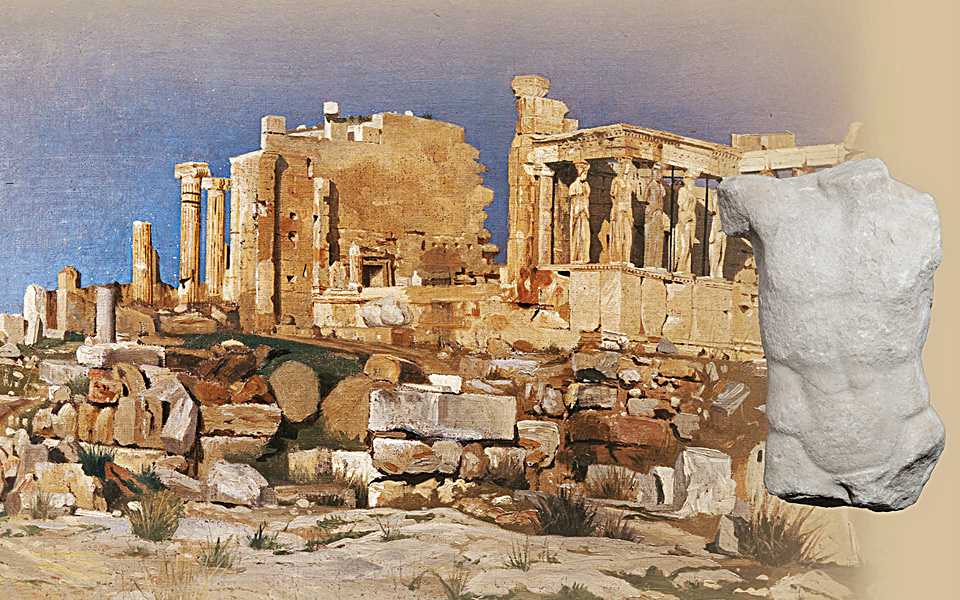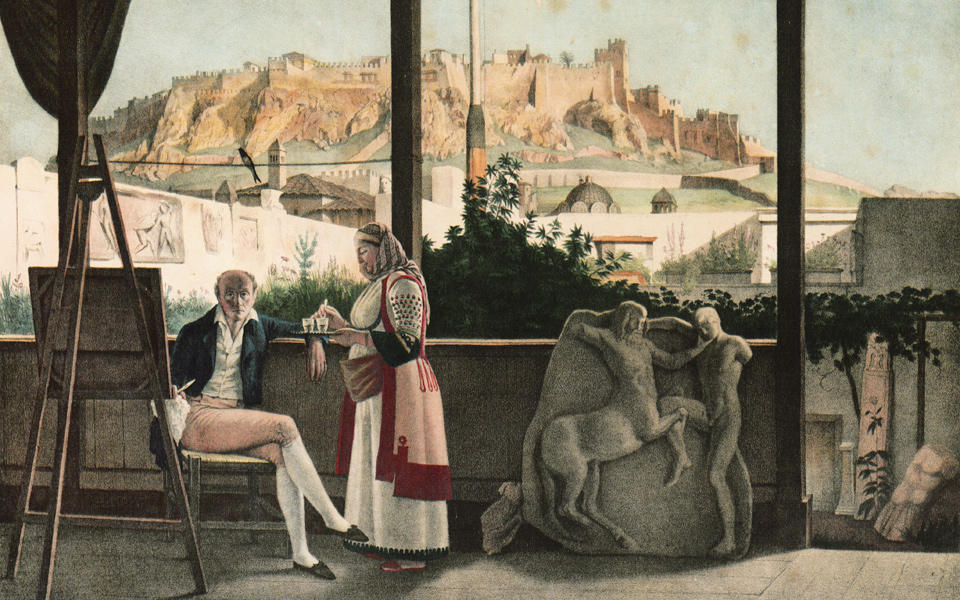The winter morning may have been chilly but inside the National Archaeological Museum it was still a late summer’s afternoon. The setting sun cast its orange light over the statues, the cicadas were singing in full voice and the smell of oregano and thyme filled our noses. At least this is the scene set up by the people of Greece’s largest museum for the exhibition A Dream Among Splendid Ruins: Strolling through the Athens of travelers, the forerunner of several events culminating in 2016 to mark the foundation’s 150th anniversary.
Within 250 square meters set aside at the heart of the historic building, visitors are able to stroll through 17th, 18th and 19th century Athens – taking in the Temple of Hephaestus, the Tower of the Winds, the Pnyx, the Agora and, of course, the Acropolis – as it was seen through the eyes of Europeans who came to Greece in those distant times, affected by classicism, in search of the traces of its ancient civilization. Was their influence important? Undoubtedly! Because they reintroduced Athens to Europe and contributed to Greece being perceived as the homeland of European intellectual thought.

© Vangelis Zavos
“Strolling through the Athens of travelers, the forerunner of several events culminating in 2016 to mark the foundation’s 150th anniversary.”
How true the depictions in their works – publications, paintings, watercolors and engravings – are is hard to say. The images of the city they passed down are a mixture of realistic and dreamlike; they did not always describe Athens the way it actually was, but the way they themselves would have liked it to be, blurring the boundaries in between. This game between the real and the imaginary is what makes this exhibition particularly fascinating. But its greatest strength lies in the fact that the exhibits on the travelers, comprising 22 illustrated editions and 14 original works of art (most of which come from the Library of the Hellenic Parliament, as well as the Museum of the City of Athens and the General State Archives of Greece) are cast in conversation with 35 marble sculptures – many of which have been taken out of storage for the first time. One of the painters, for example, visited Athens in 1819. Taking advantage of the magnificent view of the Acropolis from the house of the French Vice-Consul Louis François Sebastien Fauvel near the Roman Agora, he gives us a stunning depiction of the Sacred Rock, with Fauvel himself posing on his balcony next to Greek antiquities from his private collection, amassed during his notorious “hunts” for ancient relics. Among these is a male torso in breastplate, seen today in front of a case with a lithograph by Louis Dupré. The “dialogue” between the colored cuirassed man and his marble alter ego, almost two centuries later, is fascinating.

DON’T MISS:
• View of Athens (1674)
Written by Jesuit monk Jacques-Paul Babin, it is the first printed traveler monograph on Athens in modern times, embellished with several engravings.
• Colossal head of Zeus (2nd century AD)
It was found at the Temple of Olympian Zeus in 1937 and is part of a statue that was meant to be visible from a great distance, as attested by its impressive dimensions.
• Handwritten inventory
by Kyriakos Pittakis
Kyriakos Pittakis (1798-1863) was the first curator of antiquities in Athens, appointed in 1832, and although self-taught, one of the pioneers in archaeology in Greece. This inventory, dating to 1834, comprises the antiquities kept then at the Temple of Hephaestus, the Propylaia and the so-called Stoa of Hadrian, actually the western wing of Hadrian’s Library.
INFO
National Archaeological Museum
• 44 Patission
• Tel. (+30) 213.214.4891
• Open Mondays 13:00-20:00, Tuesdays-Sundays 9:00-16:00
• The exhibition runs through October 8, 2016.











